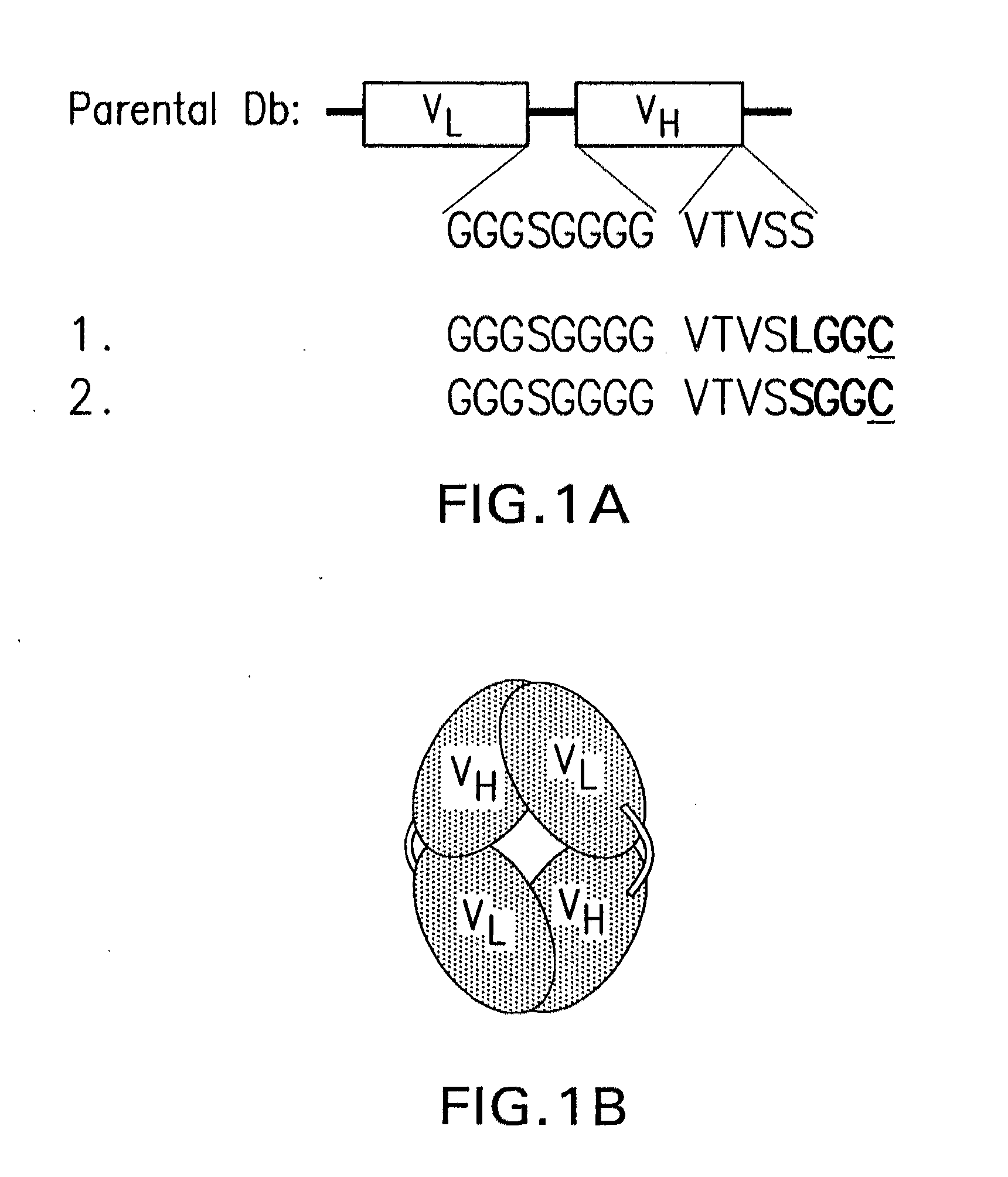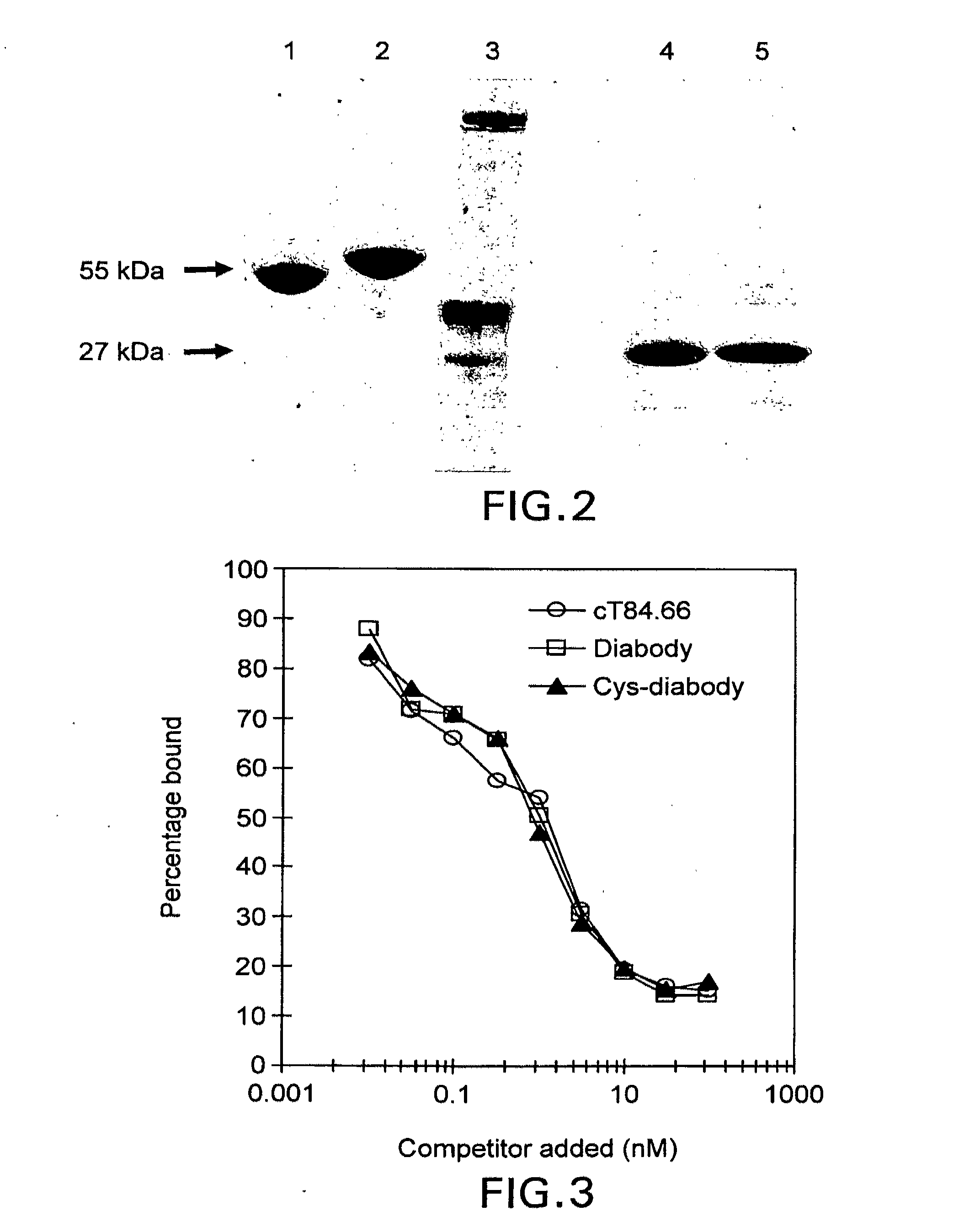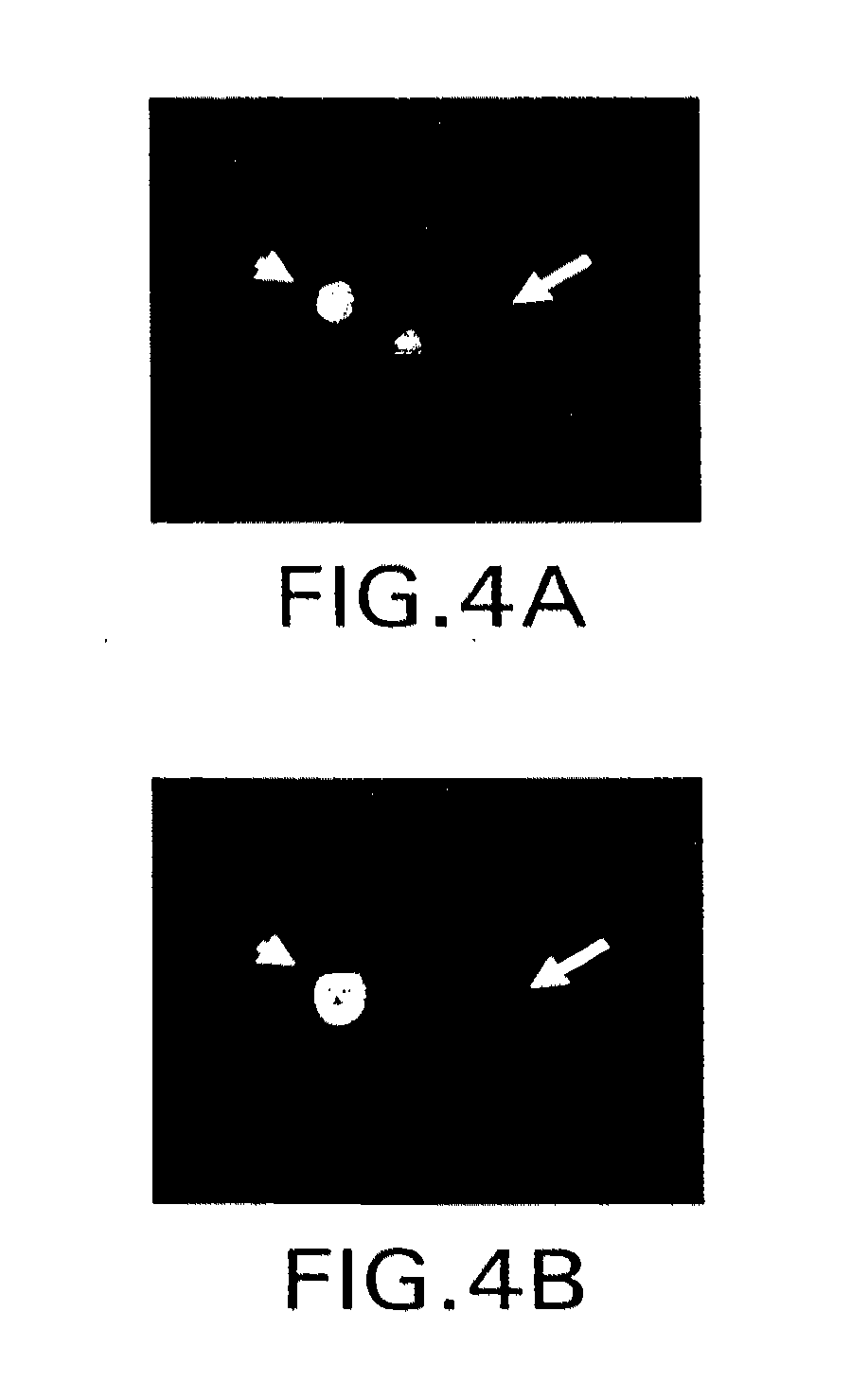Covalent disulfide-linked diabodies and uses thereof
a diabolic and covalent technology, applied in the field of recombinant antibody fragments, can solve the problems of limiting the utility of antibodies, lysines located in and lysine location or near the antigen-binding site could also potentially interfere with binding through sterical hindrance, so as to facilitate site-specific chemical modification and stable disulfide bond
- Summary
- Abstract
- Description
- Claims
- Application Information
AI Technical Summary
Benefits of technology
Problems solved by technology
Method used
Image
Examples
example
[0036]In the present example, cysteine residues were introduced into an anti-CEA diabody at different locations, in order to provide specific thiol groups for subsequent chemical modification. Modified proteins carrying an added C-terminal gly-gly-cys sequence were shown to exist exclusively as a disulfide-bonded dimer. This “cys-diabody” retained high binding to CEA and demonstrated tumor targeting and biodistribution properties identical to the non-covalent diabody. Furthermore, following reduction of the disulfide bond, the cys-diabody could be chemically modified using a thiol-specific bifunctional chelating agent, to allow labeling with radiometal. Thus, the disulfide-linked cys-diabody provides a covalently linked alternative to conventional diabodies, and, following reduction, generates specific thiol groups that are readily modified chemically. This format provides a useful platform for targeting a variety of agents to cells, such as for example, CEA-positive tumors.
[0037]In...
PUM
| Property | Measurement | Unit |
|---|---|---|
| pH | aaaaa | aaaaa |
| pH | aaaaa | aaaaa |
| half life | aaaaa | aaaaa |
Abstract
Description
Claims
Application Information
 Login to View More
Login to View More - R&D
- Intellectual Property
- Life Sciences
- Materials
- Tech Scout
- Unparalleled Data Quality
- Higher Quality Content
- 60% Fewer Hallucinations
Browse by: Latest US Patents, China's latest patents, Technical Efficacy Thesaurus, Application Domain, Technology Topic, Popular Technical Reports.
© 2025 PatSnap. All rights reserved.Legal|Privacy policy|Modern Slavery Act Transparency Statement|Sitemap|About US| Contact US: help@patsnap.com



